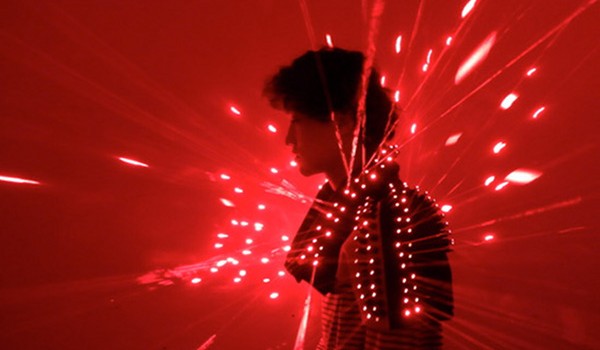When we walk, run or dance, our movement can be converted into electrical energy. A small collection of enterprising inventors have taken the task of using clothing to capture this kinetic energy, then using it to power a watch, an mp3 player, even a mobile phone.
An industrial designer named Soledad Martinis working on a prototype to place kinetic energy harnesses in common shoes, allowing the wearer to charge a cell phone battery while they walk or run.
Recently, designer Rafael Rozenkranz has built a jogging suit with an embedded mp3 player that runs solely off the kinetic energy produced during a jog. The technology isn’t necessarily new, but it is making its way into fashion more and more each decade. One early example of kinetic energy in fashion was with kinetic watches, which have ran off the movement of the human body since the 1980s.

The environment around us is changing, and our fashion can respond to that in artful or informative ways. Take for example the climate dress by Diffus, a system that monitors nearby air pollution levels and provides feedback in the form of LED light. When the air is heavily polluted, the lights within this dress pulsate quickly to alert the wearer and those nearby. A similar system by designers Nien Lam and Susan Ngo also monitors the air quality, yet doing so with a simple color change in the lungs on the front of the shirt. Last, the work of Stijn Ossevoort is less functional but it remains beautiful– a dress that lights up as gusts of wind pass by. – See more at:

3D printing technology is still in its infancy, but it has already made its way to the world of fashion. Everything from shoes to bikinis have gone under the lathe of a 3D printer, with a notable example being the Invisible Shoes by Andreia Chaves. These stunning, faceted shoes are carved by a 3D printer and then manually merged with a classic pump. Others like Continuum Fashion have crafted bikinis using the 3D printing route. Our friends at Ecouterre have been hot on the trail of 3D-developed fashion, and their 3D roundup captures a lot of this trend in action

Some future designs won’t be as functional as they will be visually impacting, but such has always been true about the clothes we wear. Designer Wei-Chieh Shih built a laser suit with multiple rows of lasers stretching across the wearer’s back. The suit will only have full visibility in a smoky environment, so this one is built for the night clubs. Mary Huang of Rhyme & Reason uses light as a primary element in her designs, reflecting a feminine sparkle in her already flattering illuminated clothing.

Smart Tailoring

Direct Panel on Loom (DPOL) technology, also called Smart Tailoring was created by Indian designer Siddhartha Upadhyaya as a way to increase fabric efficiency (by 15 percent) and reduce lead-time (by 50 percent) to manufacture high-end garments.
By using a computer attached to a loom, data such as color, pattern and size related to the garment is entered, and the loom cranks out the exact pieces — which then just need to be constructed. Weaving, fabric cutting, and patterning happen all at once. Brilliant. Not only does DPOL minimize immense waste of fabric, it also helps in saving energy and water by 70 to 80 percent.
Sources:
http://www.treehugger.com/style/high-tech-meets-low-waste-in-new-computer-generated-eco-fashion.html
Sources:
http://www.treehugger.com/style/high-tech-meets-low-waste-in-new-computer-generated-eco-fashion.html













